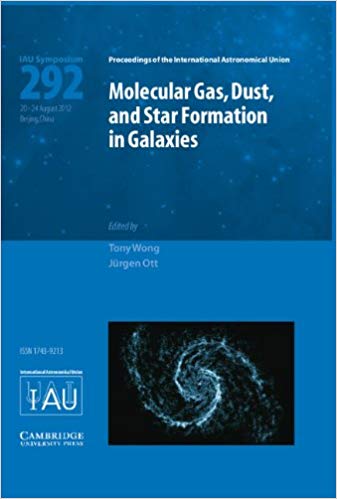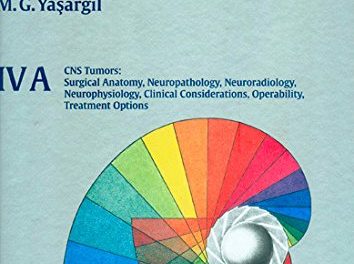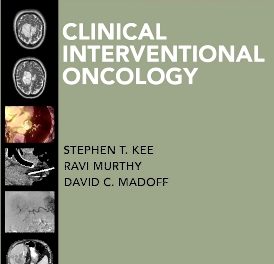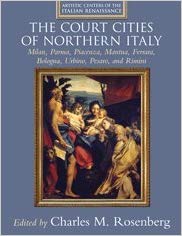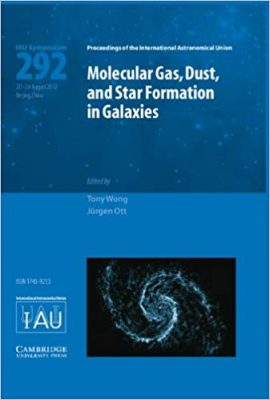 Editors: Tong Wong and Jurgen Ott
Editors: Tong Wong and Jurgen Ott
Publisher: Cambridge University Press – 387 pages
Book Review by: Sonu Chandiram
At the heart of modern astronomy is understanding galaxy formation and evolution, the editors of this book Tony Wong and Jurgen Ott point out in the Preface. And they add that central to the goal of understanding the formation of galaxies is the necessity to improve our understanding star formation, and thus the evolution of the interstellar medium (ISM).
This book is based on the proceedings of the 202nd Symposium of the International Astronomical Union (IAU) held in Beijing, China on August 20-24, 2012. We list below the topics that were discussed in that conference, which serves as an overview of the contents of this work.
Plenary Session: From Gas to Stars Over Cosmic Time
- Session 1: Molecular Clouds, Internal Properties, Star Formation, Stellar Feedback
- Session 2: Molecular Clouds: Distribution, Large-Scale Properties, Formation, Evolution
- Session 3: Atomic and Molecular Gas in Galaxies: Nearby Dwarfs, Spirals, Early-types, Starbursts
- Section 4: Atomic and Molecular Gas in Galaxies: Cooling Flows, Radio Galaxies, High-Redshift Galaxies, Epoch of Re-ionization
- Session 5: ISM Diagnostics, Physical Conditions, Excitation Mechanisms, Chemistry, Atomic-Molecular Transition
- Session 6: ISM Diagnostics: Dust
- Session 7: Star Formation: Tracers, Scaling Relations, Efficiency, Modeling
- Session 8: Feedback: Stellar Feedback, AGN Feedback, Gas Accretion, Outflows
The attendees focused on the detailed properties of the clouds where stars are born, the fuel (molecular gas) for star formation, tracers of the formation, the quantification of star formation, and the effects on galaxy evolution. The symposium took place two years after an event in Oxford, England with a similar theme,
The editors inform us that the intervening two years saw accelerated growth in scientific output, particularly, particularly at Herschel Space Observatory, the airborne Stratospheric Observatory for Infrared Astronomy (SOFIA), and the Atacama Large-Millimete/Sub-Millimeter Array (ALMA). More than 70 tasks and 200 posters were presented over the 5 days in Beijing.
The first step towards understanding the interstellar medium is to accurately constrain the physical and chemical properties, the editors point out. They report that Herschel and SOFIA have been producing “revolutionary” datasets on dust and on excited and ionized species of the ISM closely connected to star formation.
Among other topics discussed in the China conference were: complementary ground- and space-based programs in the X-ray, ultraviolet, optical and radio frequencies. These were done to review the relationships between star-formation tracers and the evolution of star formation over wide timescales.
Meanwhile, on small spatial scales such as tens of parses, the incidence, distribution, internal properties (such as Larson relations) and formation/evolution of giant molecular clouds were an important topic at the Beijing meeting.
The attendees also explored the molecular content of galaxies across both morphological types (dwarfs, early-types, spirals, active vs. non-active galaxies) and cosmological epochs (from nearest galaxies to high-redshift quasars)
Each of the chapters in this book begins with an Abstract and Keywords, and lays down the topics covered and discussed in it, making it easier for the reader to choose which topics to go to first, and next, and so on. To give you an example of what you will find in a typical chapter, let us look at the topics you will find in chapter 3, Atomic and Molecular Gas in Galaxies: Nearby Dwarfs, Spirals, Early-types, Starbursts:
- Introduction
- Measuring Molecular Gas and Dust in Galaxies
- Molecular Gas in Spiral Galaxies
- Dust in Spiral Galaxies
- Future Prospects
This is an unusual type of book: it is based on subjects in astronomy that were discussed in an international symposium. Such meetings help spur discoveries and sharing of information that benefits mankind. The editors and authors are to be commended for putting into print what they learned, for the advancement of knowledge.
Editors:
Tong Wong is affiliated with the University of Illinois at Urbana-Champaign, Illinois
Jurgen Ott is affiliated with National Radio Astronomy Observatory, USA.

